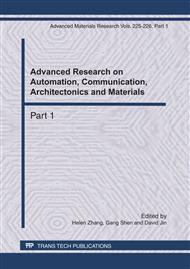p.757
p.762
p.766
p.771
p.776
p.780
p.784
p.789
p.794
A Semantical Approach for Automatically Transforming Software Requirement Specification into Formal Presentation
Abstract:
Software engineering is a critical step in obtaining high quality production. However, requirement specifications that written in natural language is inevitably has ambiguity. Modern driven architecture makes use of requirement model for the complement of requirement specification to eliminate such ambiguity. However, currently, the transformation from requirement specification into formal model only limited in syntax level, thus lack of correctness and precision. This paper proposed an approach in semantical level to process textual specifications of the requirements of unlimited natural language and their automatic mapping to the formal presentation.
Info:
Periodical:
Pages:
776-779
Citation:
Online since:
April 2011
Authors:
Price:
Сopyright:
© 2011 Trans Tech Publications Ltd. All Rights Reserved
Share:
Citation:


